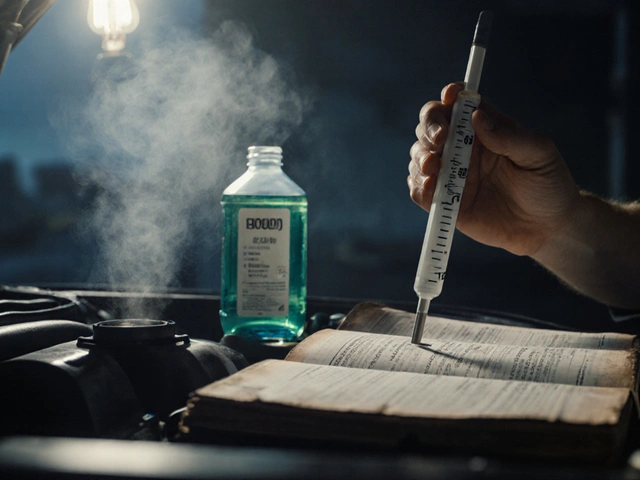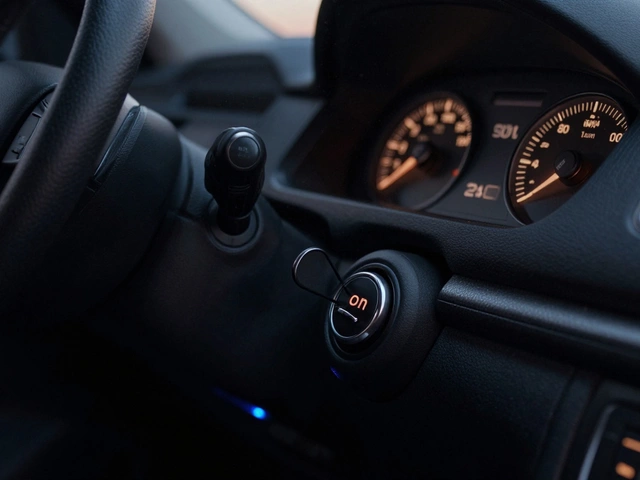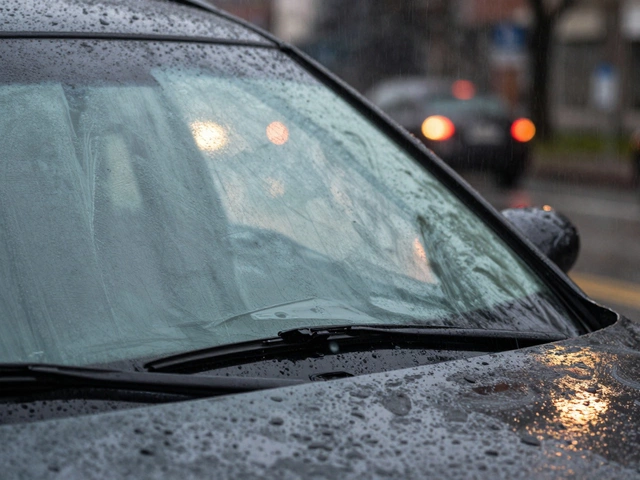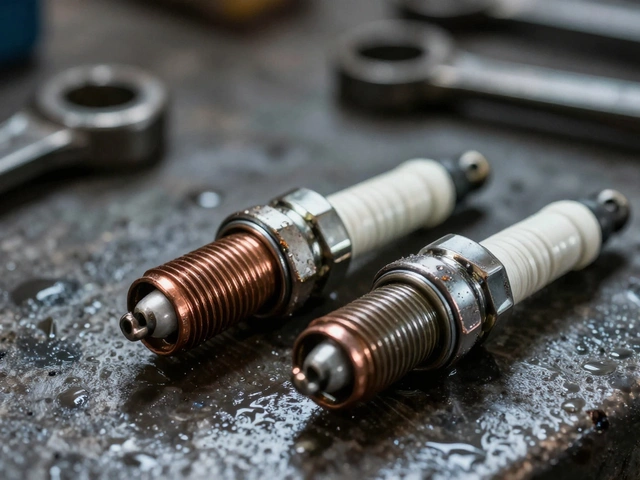Your car hesitates, sputters, or flat-out refuses to start—how do you figure out if the fuel pump is the troublemaker? Diagnosing a bad fuel pump isn't rocket science, but it’s easy to chase the wrong problem if you don’t know what to look for. A lot of folks end up replacing spark plugs or sensors before realizing it was the fuel pump all along.
The first step is to know what a fuel pump actually does: it moves gas from the tank to the engine, making sure the engine gets just the right amount of fuel at the right pressure. If it starts to fail, your car won’t get enough juice and you’ll feel it pretty quickly. Stalls, rough idling, trouble accelerating, or hearing nothing when you turn the key—these could all mean your fuel pump’s on its last legs.
- What Does a Fuel Pump Do, Anyway?
- Clear Signs Your Fuel Pump Is Going Bad
- Simple Ways to Test a Fuel Pump at Home
- When to Replace and Pro Tips
What Does a Fuel Pump Do, Anyway?
The fuel pump is like the delivery guy for your engine. Its main job is to move gas from your tank up to the engine, but it can’t just trickle it in—the pressure and the amount both have to be spot-on. If the pump slacks off, your engine won’t get enough fuel. That’s why a fried fuel pump often means your car just refuses to run right, no matter what you do.
Most vehicles built after the ’90s have electric fuel pumps tucked inside the gas tank. These push fuel up through the lines and past the fuel filter, so only clean gas gets to your engine. Older rides sometimes have mechanical pumps, usually bolted to the engine itself, especially in classic cars or trucks. Both types serve the same purpose: making sure the engine doesn’t starve for fuel.
“A modern fuel pump has to maintain between 40 and 60 psi for most fuel-injected cars. If pressure drops, engine performance drops right along with it.” — Haynes Manuals
| Type | Location | Typical Pressure |
|---|---|---|
| Electric | Inside fuel tank | 40-60 psi |
| Mechanical | Engine block | 4-6 psi |
When you turn your key, the fuel pump kicks on for a couple seconds just to pressurize the lines. If you don’t hear that faint whirring sound from the back of your car, it might be a sign your fuel pump is in trouble. Bottom line: No working pump, no fuel moving—and that means you’re not going anywhere.
Some pumps work harder than others, especially if you run low on gas a lot (the pump uses fuel to cool itself). Heat kills pumps. That’s why letting your tank run almost empty all the time can actually cost you big in the long run!
Clear Signs Your Fuel Pump Is Going Bad
Spotting a bad fuel pump early means less time stuck on the side of the road. There are a few dead giveaways your pump is having issues, and most of them are hard to miss once you know what to watch for.
- Engine sputters at high speed: If you’re cruising and the engine suddenly acts like it got punched—jerking or sputtering and then smoothing out—that’s a classic symptom. This usually means the fuel pump isn’t supplying steady fuel at highway speeds.
- Loss of power while accelerating or driving uphill: Whenever your foot’s down and you should feel a surge, but instead the car bogs down or even stalls, the pump may not be keeping up.
- Car stalls, especially when hot: Some pumps work fine when cold but fail as they heat up, causing random stalls that always seem to happen at the worst time.
- Difficulty starting: If you turn the key and the engine cranks forever (or just won’t start), the fuel pump might not be sending fuel at all. Sometimes you’ll hear nothing from the back of the car when you first turn the key, which is another clue.
- Unexpected decrease in fuel efficiency: If you find yourself filling up more often, a weak pump could be making the engine work harder, burning more gas for less distance.
- Loud whining or buzzing noise from the tank: Healthy pumps are pretty quiet. If you hear a high-pitched whine or buzz from the fuel tank, especially while the car’s running, that’s usually bad news.
It’s pretty wild, but data from repair shops shows that about 7 out of 10 vehicles towed in with no-start issues have a faulty fuel pump or related wiring problem. Noticing symptoms early can save you cash and keep you off the tow truck’s regular route.

Simple Ways to Test a Fuel Pump at Home
You don’t need a shop full of gear to check if your fuel pump is the problem. A few quick tests at home can give you a pretty good idea. Grab some basic tools and let’s get your hands a little dirty.
First up, listen for that tell-tale hum. When you turn the ignition key to the "on" position (not start), a working fuel pump will usually buzz or whine from the gas tank for a second or two. If it’s dead quiet, there’s a chance your pump isn’t switching on. “If you can’t hear the pump prime at all, you might have a pump, relay, or power issue. That’s your starting point,” says car repair YouTuber and former mechanic Eric O.
Here’s a simple step-by-step fuel pump check:
- Remove the gas cap: Have a buddy turn the key to "on" while you listen close at the cap opening. No sound? Keep testing.
- Check fuses and relays: Open the fuse box and look for the fuel pump fuse or relay. If these are blown or don’t click, you’re off the hook—just replace them.
- Crank and spray test: Pop off the air intake hose, spray a quick squirt of starter fluid, then crank the engine. If it fires and dies seconds later, your ignition is good, but the engine isn’t getting gas—pointing right at the pump.
- Fuel pressure reading: Pick up an inexpensive fuel pressure gauge from your local auto parts store. Hook it up to the test port on your fuel rail (they look like shrader valves on bicycle tires). Compare the readings against your vehicle manual.
If the pressure’s low or zero, yup—it’s very likely the pump.Vehicle Type Normal Pressure (PSI) Most Cars 35-50 Modern Trucks 55-65
Don’t forget: a clogged fuel filter acts just like a dying pump, so swap it out first if you’re unsure. That $10 filter could spare you a $300 repair.
When to Replace and Pro Tips
If your car keeps acting up even after checking fuses and fuel filters, it’s probably time to swap out the fuel pump. Most fuel pumps are built to last about 100,000 miles, but hard driving or dirty fuel can kill them much faster. If your car stalls when the engine’s hot, loses power going uphill, or you don’t hear a faint whirr from the gas tank when turning the key—these are classic signs it’s replacement time.
- If fuel pressure at the rail drops below spec (check your manual for the exact number), don’t wait—the pump is on its way out.
- A sudden dip in fuel economy can also point to a struggling pump since the engine won’t get a steady fuel flow.
- Frequent overheating is bad news—modern electric pumps use the fuel itself for cooling, so a low tank puts extra stress on the system. Try to keep at least a quarter-tank most of the time.
Waiting too long often means being stranded—tow trucks aren’t cheap, especially these days. Replacing a fuel pump is usually something done at a shop, since it requires dropping the tank for most cars. Shop around for prices, since labor is usually a lot more than the part itself.
| Mileage (mi) | Risk of Failure |
|---|---|
| 50,000 | Low |
| 100,000 | Moderate |
| 150,000+ | High |
Need a quick tip? Always replace the fuel filter when swapping the pump—it’s cheap insurance. Also, use good quality gas whenever you can, since lower-quality fuel can clog up both the filter and your new pump in no time. If you have to deal with ethanol-blended gas, keep an eye out for corrosion and moisture in the tank.
Keeping your fuel pump healthy isn’t rocket science, but getting ahead of problems will save you money and stress. If the warning signs are there, don’t put it off.








